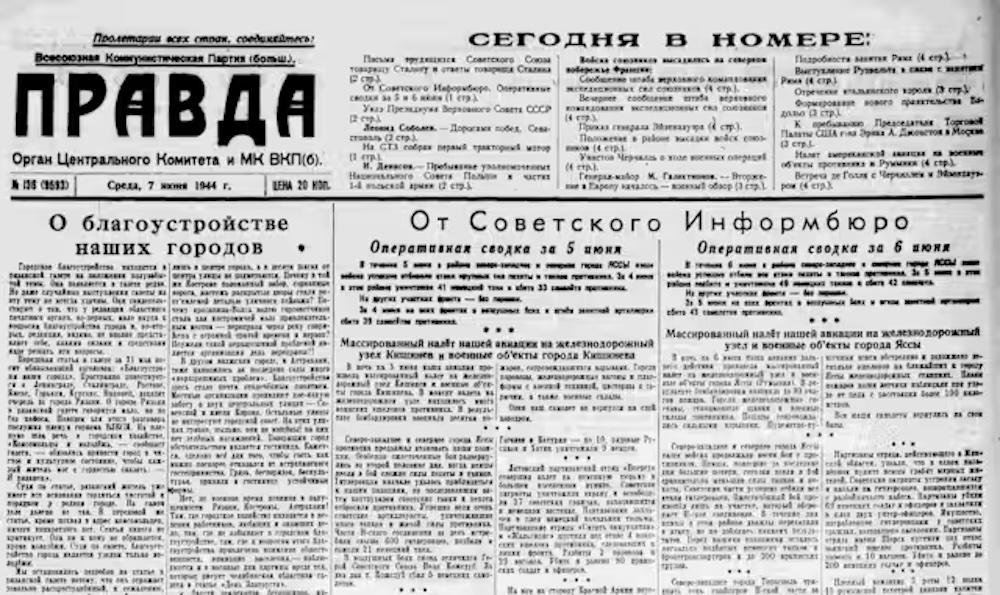history
Soviet Media Downplays Impact of D-Day Invasion

Russian President Vladimir Putin’s absence from the 80th anniversary commemorations of D-Day marks a notable contrast to his reaction during the 75th anniversary in 2019, when he downplayed the event’s significance. This year, the ongoing war in Ukraine prevents his attendance. Reflecting on history, it’s essential to consider how Soviet media portrayed the Normandy invasion, a pivotal moment in World War II.
As a scholar of media and propaganda in the 19th and 20th centuries, I can attest that Soviet citizens received a carefully curated narrative about D-Day. While Soviet publications acknowledged the invasion’s significance, they minimized its impact in the grand scope of the war, emphasizing that this action was long overdue.
On June 7, 1944, the official Soviet newspaper, Pravda, featured a brief mention of D-Day, relegated to a small text box. More prominent stories focused on Soviet achievements in urban development and military operations in Romania. Notably, the invasion was not deemed front-page news.
The second page celebrated Stalin’s support for children of front-line soldiers. It also included a lengthy article detailing Red Army victories, which occupied the forefront of Soviet attention. Only on the third page did D-Day receive more focused coverage, headlined “The Invasion of Europe Has Begun.” This report detailed the extensive operation launched by Allied forces to liberate Western Europe from Nazi control.
Accompanying this article was a map outlining key locations in Northern France. Pravda accurately connected the Normandy landings to the liberation of Italy, asserting that the German army was significantly weakened after years of combat with the Soviets.
Coverage in the English-language publication, Moscow News, positioned D-Day more prominently, reflecting a different narrative targeting international readers. This front-page article featured a photo of General Dwight D. Eisenhower and highlighted both the invasion’s significance and ongoing Red Army victories.
Yet, a shift in tone was evident; the Soviet press previously criticized the Allies for their failure to open a second front. For years, propaganda reflected a sense of betrayal, with caricatures illustrating Allied leaders as indecisive individuals delaying crucial military actions.
Following the invasion, however, the narrative evolved to acknowledge Allied victories in a more favorable light. The once-critical tone gave way to a celebration of combined efforts against the Axis powers, symbolizing an alliance that would soon fracture into Cold War tensions.
As time passed, coverage of D-Day diminished in Soviet media, overshadowed by narratives of Soviet sacrifice and triumph, particularly at Stalingrad. This selective memory has persisted, culminating in the current dismissive attitude toward D-Day, deemed “not a game changer” in historical context.


















